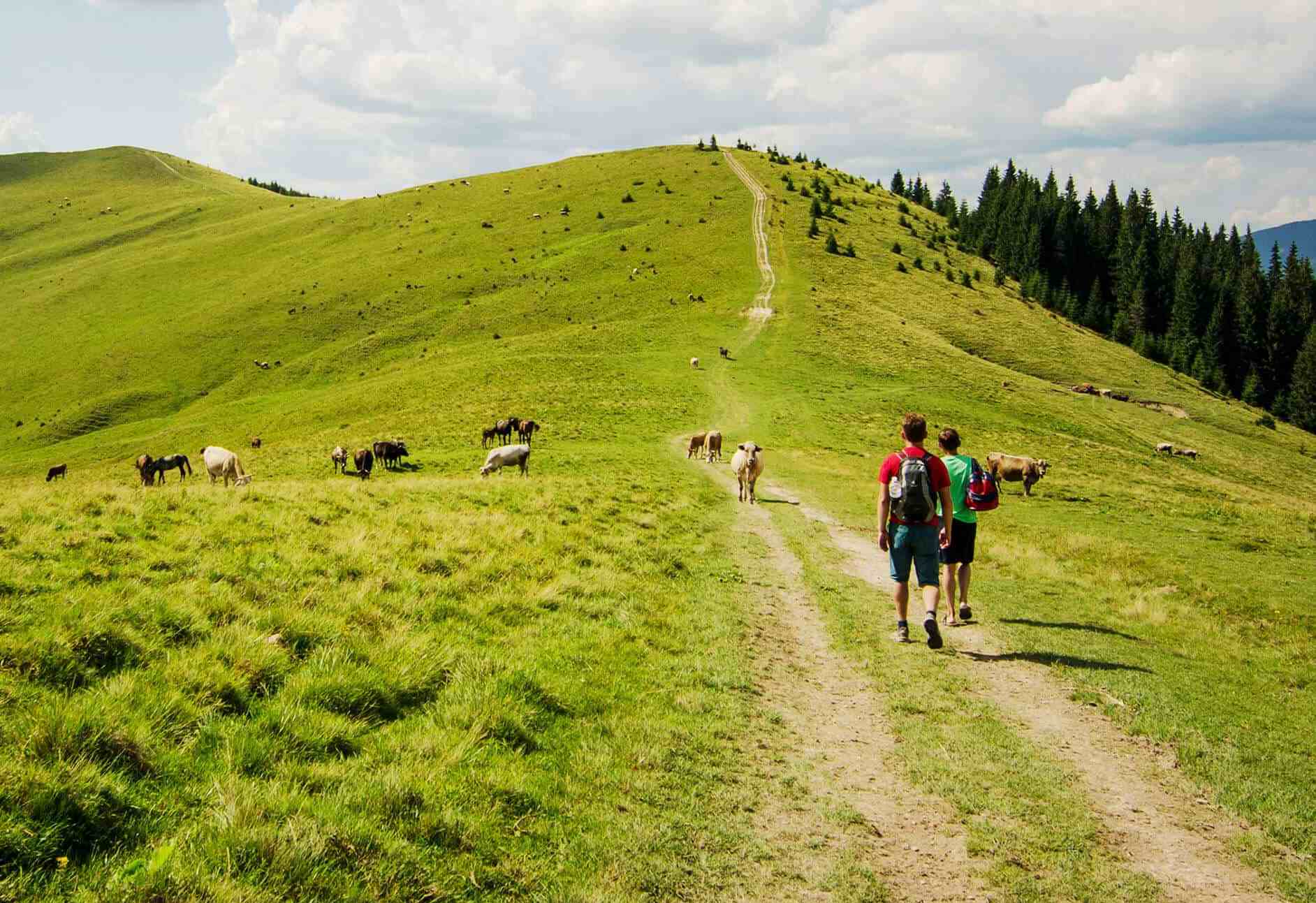The Way of St. James, or El Camino de Santiago, is one of the most famous pilgrimage routes in the world. Each year, millions of people walk its paths, which pass through the Pyrenees mountains, the fields of northern Spain, and the beautiful coastlines of Galicia. But what is the Way of St. James, and why is it called that? In this post, we’ll dive into its history, meaning, and what makes this journey so special.
What Is the Way of St. James?
The Way of St. James refers to a network of pilgrimage routes leading to the Cathedral of Santiago de Compostela in northwestern Spain. Here, according to tradition, lie the remains of St. James the Apostle, who is believed to have brought Christianity to the Iberian Peninsula.
The Camino has various paths, the most famous being the Camino Francés, which starts in the French town of Saint-Jean-Pied-de-Port and covers about 780km (nearly 500 miles) to Santiago de Compostela. Other routes include the Camino Portugués (from Portugal), the Camino del Norte (along the northern coast of Spain), and the Camino Primitivo, the oldest route, dating back to the early Middle Ages.
Walking the Way of St. James is not just a physical journey but also a deeply personal and transformative experience. Along the route, pilgrims encounter a mix of breathtaking landscapes, historical landmarks, and moments of quiet reflection. Whether walking alone or with others, the Camino fosters a sense of community and connection, making it as much about the journey as the destination.
Why Is It Called the Way of St. James?
The name “Way of St. James” comes from the route’s purpose as a path to honour St. James the Greater, one of Jesus’ apostles. The story goes that, after his martyrdom in Jerusalem, his disciples transported his body to the Iberian Peninsula, where he had preached during his lifetime. His remains were eventually buried in what is now Santiago de Compostela, and over time, the site became one of the most important Christian pilgrimage destinations, alongside Jerusalem and Rome.
The name itself has origins in multiple languages, all tracing back to “St. James”:
- In Spanish, “Santiago” combines San (saint) and Yago (a form of James).
- In English, it’s called the Way of Saint James, highlighting its purpose as a tribute to the apostle.
- In French, it’s referred to as Le Chemin de Saint Jacques.

The Spiritual and Historical Significance of the Way of St. James
The Way of St. James is steeped in both religious and cultural significance. Originally, medieval Christians walked the route as an act of penance or devotion, seeking a deeper connection with their faith. The journey was also a way to seek forgiveness for sins or to pray for protection and guidance.
Today, pilgrims (or peregrinos, as they’re called in Spanish) walk the Way of St. James for a wide range of reasons. For many, it remains a deeply spiritual experience and a chance for self-reflection. Others walk for the physical challenge, the cultural exploration, or simply to enjoy the natural beauty and camaraderie that define the Camino. Whatever the motivation, the journey offers a unique blend of physical endurance, history, and personal discovery.
What to Expect on the Way of St. James
Completing the Way of St. James is an experience that combines natural beauty, historic landmarks, and the warmth of local culture. As pilgrims walk through small villages and vibrant cities, they encounter stunning cathedrals, ancient bridges, and rural landscapes, often punctuated by the friendliness of locals who welcome pilgrims with open arms. Hostels, called albergues, provide budget-friendly accommodation specifically for pilgrims, creating a close-knit, community-driven atmosphere.
Walking the Camino typically requires months of preparation. While some choose to walk shorter segments, those aiming to receive the traditional Compostela certificate must walk at least 100km (about 62 miles) to Santiago de Compostela. The reward isn’t just the certificate but also the sense of accomplishment and connection to a centuries-old tradition.
A Holy Year, or Año Santo Compostelano, is a special year of celebration on the Camino de Santiago, marked whenever July 25—the feast day of St. James—falls on a Sunday. During a Holy Year, the Cathedral of Santiago offers special events and spiritual benefits, including the opportunity to walk through the Puerta Santa (Holy Door), which is closed during other years. Pilgrims can also gain a plenary indulgence by completing the Camino and fulfilling specific religious acts, such as attending Mass and receiving the sacraments. Holy Years only occur about 14 times per century, making them an extraordinary time for pilgrims and visitors alike. The last Holy Year was in 2021, extended into 2022 due to the pandemic, and the next will be in 2027.
Santiago de Compostela: The Heart of the Camino
At the end of the Way of St. James lies the city of Santiago de Compostela in Galicia, a city that exudes charm, history, and spirituality. As the capital of Galicia, this UNESCO World Heritage site is renowned for its stunning cathedral, which houses the relics of St. James the Apostle.
Beyond its religious significance, Santiago’s cobblestone streets, lively squares, and stone buildings transport visitors to another time. Pilgrims often gather in Praza do Obradoiro, the square in front of the cathedral, to celebrate the completion of their journey. The city also boasts vibrant markets, traditional Galician cuisine, and a welcoming atmosphere, making it the perfect place to reflect on your Camino experience and immerse yourself in local culture.
Santiago de Compostela is more than just the destination: it’s the heart of the Camino, offering a sense of accomplishment and connection like no other.

Why Walking the Way of St. James Matters Today
In our fast-paced, digital world, the Camino offers a rare opportunity to slow down, reflect, and embrace a simpler way of living, even if only for a few weeks. The journey emphasises connection – connection to oneself, to others, and to the surrounding environment. For many modern-day pilgrims, the Way of St. James is a path not just to Santiago but to self-discovery and growth.
The pilgrimage also has a strong cultural impact on communities along the route. Many villages and towns rely on Camino tourism, which has led to economic growth and cultural preservation. The Camino has inspired countless works of art, books, and films, further enriching its legacy and ensuring it remains a beloved destination for travelers worldwide.
Begin Your Journey Through Time and Purpose
The Way of St. James is much more than a path through Spain. It’s a journey through history, culture, and faith that has inspired travelers for more than a thousand years. Whether you walk it for spiritual reasons, the thrill of adventure, or personal growth, the Camino de Santiago offers an experience that touches the heart and resonates deeply with people from all backgrounds.
When you embark on the Way of St. James, you’re stepping into a timeless world where history meets the present, legends spark new stories, and every step brings you closer to Santiago—and perhaps closer to yourself.
If you’re ready to explore the Camino, uncover its iconic routes, and challenge yourself on this life-changing journey, our expert Camino planning team is here to support you every step of the way. We’ll help you find ideal accommodations, provide detailed walking notes, and share insider tips to make your trip as smooth and memorable as possible.
Whether you’re curious about the best route, need packing advice, or want a customised plan tailored to your preferences, contact our team for a free, 10-minute chat about the Camino and you’ll see why it’s one of the world’s most popular hikes!







